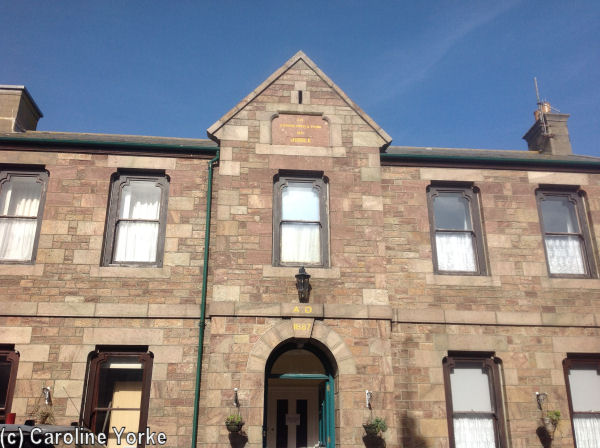Guernsey, Channel Islands
Poor Relief in Guernsey
In 1597, the Guernsey Synod introduced a parish-based poor relief system along broadly similar lines to that operating in England from around the same time. It was administered by lay officials called Deacons (also known as Diacres or Collecteurs d'Aumones) similar to the Overseers in English parishes. The Deacons collected alms at Sunday church services and redistributed them to the needy poor. If the collected funds proved insufficient, additional contributions could be demanded contributions from the most wealthy in each parish. Parishes could also draw upon le Trésor des Pauvres (the Treasure of the Poor), a collection of wheat tithes. In 1628, a Dr Heylin visited the Channel Islands and noted that people in Jersey '...are more poor, and therefore more destitute of humanity; the children here continually craving alms of every stranger; whereas in Guernzey I did not see one beggar.'
In the 18th Century, several workhouses were built in Guernsey including, in 1742, the House of Charity in St Peter Port. By the 1750s, Guernsey parishes were also paying local doctors to treat the 'outdoor' poor (those not in the workhouse). In the 19th century, Poor Law Boards in each parish administered poor relief through elected parish officials called the Procureurs of the Poor — comparable to the Boards of Guardians in England. The census report of 1851 noted that Jersey had 'only one institution for the reception of paupers, lunatics and sick persons whereas in Guernsey there are two'.
In 1937, responsibility for poor relief passed from the parochial Poor Law Boards to the Public Assistance Authority. At the same time, the Hospital Board was created. The system set up in 1937 has continued, with some changes, until the present day.
The House of Charity
The House of Charity was erected in St Peter Port 1741. The buildings were extended in 1824. After 1900, the workhouse became Town Hospital but closed in around 1990. It now houses a police station. On the ground floor of the building are 'solitary cells', once used to punish runaways from the poorhouse.
The Country Hospital
The Country Hospital was established in the parish of Castel in 1751, following the pattern of the Town Hospital. It was funded by seven of the nine "country" parishes. St Pierre du Bois joined in 1798, and Forest parish finally started contributing in 1826. In 1945, as Castel Hospital, it became a general hospital but now specialises in providing mental health care.
St Anne's Poorhouse, Alderney
The 1881 UK census lists six elderly residents at a "Poor House" in St Anne's parish on the island of Alderney, part of the Bailiwick of Guernsey.
Parish Hospital, Alderney
In 1887, in celebration of Queen's Victoria's Golden Jubilee, a Parish Hospital was erected on the High Street, Alderney. The land for its construction was donated by Judge Barbenson.

Former Parish Hospital, Alderney, 2017.
© Caroline Yorke
The premises are now sheltered accommodation known as the Jubilee Home.
Staff
Inmates
Records
- States of Guernsey Island Archives, St Barnabas, Cornet Street, St Peter Port, Guernsey GY1 1LF. Holds surviving Town Hospital records.
Bibliography
- Glendinning, Alex (1993) Eye on the Past in Guernsey (CIFHS)
- Lenfestey, Gilllian (1999) The Story of the Town Hospital (in One Hundred Years of Health - the Changing Health of Guernsey 1899-1999 edited David Jeffs, (States of Guernsey)
- Lenfestey, Gilllian (1992) Medical Practices at the Town Hospital 1743-1850 Transactions of La Société Guernesiaise Vol XXIII Part 2
- Phillips, M (2001) Poor People
Links
Acknowledgment
- Thanks to Stephen Foote for information on Guernsey
Unless otherwise indicated, this page () is copyright Peter Higginbotham. Contents may not be reproduced without permission.


